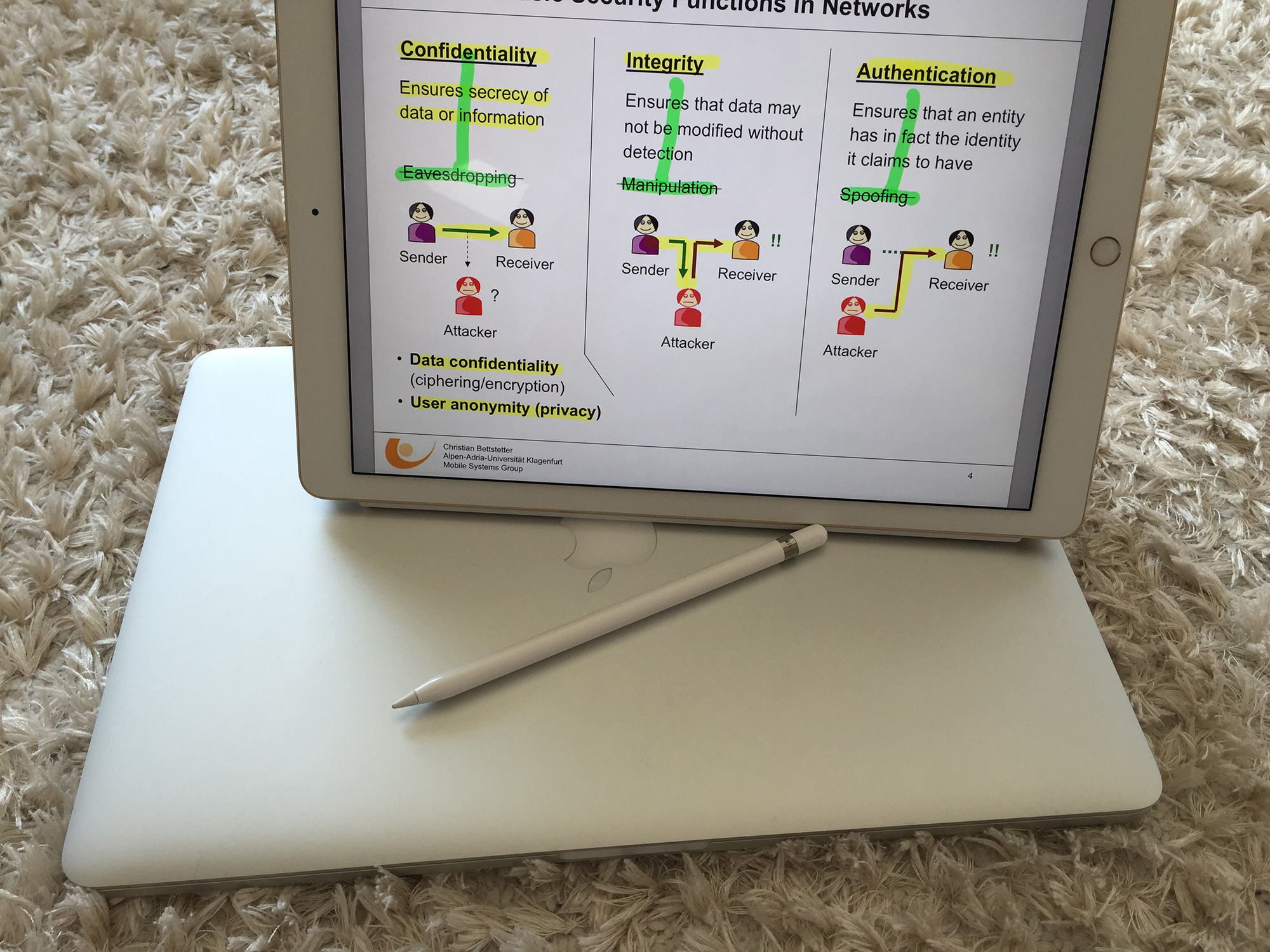My personal experience as a professor with some software tools for the Apple Mac (OS X) and iPad (iOS) that can be useful in research and teaching. By no means a comprehensive list.
By Christian Bettstetter in February 2015
Getting office work done
Mac OS X comes with a good set of preinstalled office applications for many essential tasks in the daily work of a scientist. Pages can be used for writing letters and reports and Numbers for evaluating results and calculating project budgets. An alternative, especially for those migrating from Windows, is the well-known Microsoft Office for the Mac suite, which includes Word and Excel. If you work together on joint documents with Windows users, you should double check compatibility issues with these users. One of my personal favorites for writing memos and short texts is the minimalistic iA Writer, which can also be linked to WordPress and Medium. All mentioned programs are also available for iOS.
Managing yourself and your team
The Apple calendar is a reasonable choice for most researchers; it includes synchronization between devices via iCloud. An interesting tool for personal and group task management is Trello (Web [the tool Fluid may be used to turn it into a Mac application] and iOS app). I use private Google+ groups for internal announcements that should be archived (e.g. calls for papers). Advanced mind maps can be created and shared using CmapTools (OS X, iOS, Windows, Linux).
Storing and sharing files
Versions is a comfortable subversion client for OS X. Scientists who want to read repository content on the go can use CodeViewer 2. The tool Cyberduck is a free FTP client for OS X. The cloud storage provider Teamdrive has apps for both OS X and iOS (and Windows), supports offline folders for iOS, is based in Germany, and claims that administrators cannot view your content.

Texpad: A great LaTeX environment
Writing papers
A comprehensive LaTeX distribution is MacTeX (OS X). Scientists looking for a complete LaTeX writing environment with a comfortable text editor and PDF viewer with automatic updating should try Texpad (OS X and iOS). As free alternatives, Aquamacs is a very versatile text editor based on the well-known emacs, and Skim is a PDF viewer with automatic updating. Another excellent alternative is the online platform ShareLaTeX (for non-confidential work).
Drawing figures and plots
Adobe Illustrator is one of the most powerful vector graphics editors for drawing figures for papers and lectures. The file formats EPS and PDF can be edited directly. GNUplot (OS X, Windows, Linux and others) is a tool for plotting data; it is not so comfortable as its alternatives but provides a very comprehensive set of features.
Giving presentations and lectures
The standard application for giving presentations is PowerPoint. Mac and iPad users may use Keynote as a good alternative, but should be aware of the fact that Keynote is not available for collaborators using Windows. Probably the most reliable and convenient way to give presentations and lectures is to use slides in PDF format using an appropriate PDF reader. The iPad app GoodNotes does this job for you; it also allows handwritten notes on your slides, which can be very useful from a didactic point of view; it’s great with the iPad Pro and Apple pen.
Updated: Oct 18, 2016; Aug 30, 2017.
Another update
If I had to limit to six non-preinstalled apps on my iPad Pro for work: @Trello to manage projects, @SlackHQ to communicate in our team, @GoodNotesApp to give lectures and annotate papers, @iAWriter to write notes, @Texpad to write papers, @Twitter to get/publish news. Your list?
— Christian Bettstetter (@bettstetter) September 29, 2018
Another update during the COVID lockdown 2020/2021
Setup of my remote lectures with @BigBlueButton: Connect #iPad to #Mac. Write with @GoodNotesApp. Exploit #QuickTime to record and display iPad screen (movie rec, input iPad), share window in BBB. Mic by @elgato. Internal cam. #Enjoy. pic.twitter.com/HAPA9JqELg
— Christian Bettstetter (@bettstetter) January 21, 2021
Further tools
- CodeRunner: A nice programming editor for MacOS
- Graphviz: Draw diagrams and graphs
